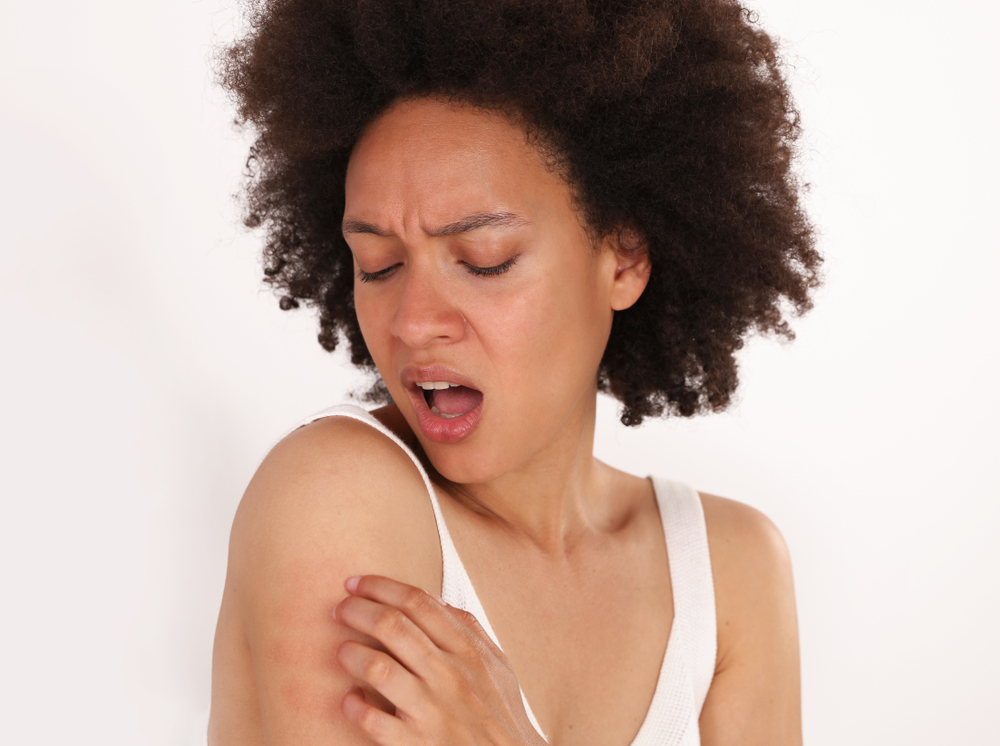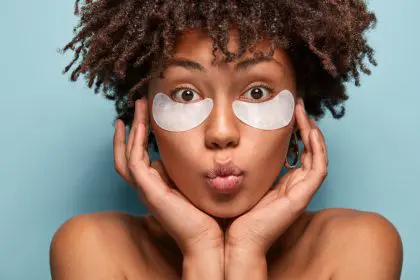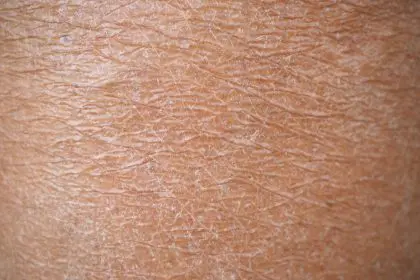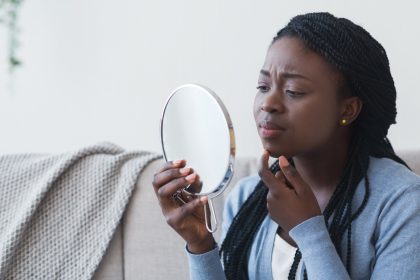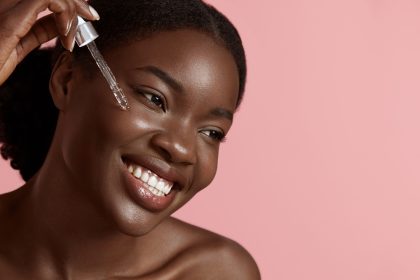Years of enjoying sunny days can eventually take a visible toll on your skin. The accumulated effects of ultraviolet radiation manifest as dark spots, uneven texture, fine lines, and loss of elasticity – collectively known as photoaging. The good news? With consistent care and the right approach, you can significantly improve sun-damaged skin and restore a healthier, more youthful appearance. These six strategies offer effective solutions for addressing photodamage at any age.
Incorporate potent antioxidants daily
Antioxidants represent your first line of defense against further damage while actively repairing existing sun damage. These powerful molecules neutralize free radicals – unstable atoms that damage cells and accelerate aging – while stimulating skin repair mechanisms.
Vitamin C stands as the gold standard antioxidant for sun-damaged skin. This powerhouse ingredient not only protects against further damage but actively brightens existing dark spots by inhibiting melanin production. It also stimulates collagen synthesis, improving skin firmness and reducing fine lines. For optimal results, look for serums containing L-ascorbic acid (the most effective form of vitamin C) at concentrations between 10-20%.
Another remarkable antioxidant for sun repair is vitamin E, which works synergistically with vitamin C, enhancing its effectiveness while providing additional protection and repair benefits. Products combining these two antioxidants often deliver superior results compared to either ingredient alone.
Niacinamide (vitamin B3) offers multiple benefits for sun-damaged skin. This versatile ingredient strengthens the skin barrier, reduces inflammation, improves uneven pigmentation, and minimizes enlarged pores – all common issues in photoaged skin. A concentration of 4-5% provides optimal benefits without irritation.
For comprehensive antioxidant protection, consider products containing polyphenols derived from green tea, resveratrol from grapes, or ferulic acid. These plant-based antioxidants provide additional protection against different types of free radical damage while supporting overall skin health.
The morning represents the ideal time to apply your antioxidant products, placing them after cleansing but before moisturizer and sunscreen. This timing allows them to work throughout the day when your skin faces the most environmental stressors. Consistency proves key – visible improvements typically emerge after 8-12 weeks of daily use.
Add retinoids to your evening routine
When it comes to reversing sun damage, no ingredient has more scientific support than retinoids – vitamin A derivatives that fundamentally transform skin on a cellular level. These powerful compounds accelerate cell turnover, stimulate collagen production, fade hyperpigmentation, and improve skin texture.
Retinoids work by binding to specific receptors in skin cells, essentially reprogramming their behavior toward healthier functioning. This process increases the production of new, undamaged cells while simultaneously building structural proteins that maintain skin firmness and resilience. With consistent use, even deep wrinkles and stubborn dark spots show significant improvement.
Prescription-strength retinoids like tretinoin (Retin-A) offer the most dramatic results for severely sun-damaged skin. These formulations provide the highest concentration of active ingredients and typically show results more quickly than over-the-counter options. Working with a dermatologist allows for a personalized approach based on your specific needs and sensitivity level.
For those preferring non-prescription options, retinol represents the most effective over-the-counter retinoid. While milder than prescription versions, modern retinol formulations deliver impressive results with less irritation. Start with products containing 0.25-0.5% retinol, gradually working up to 1% formulations as your skin develops tolerance.
Bakuchiol has emerged as a plant-based alternative for those unable to tolerate traditional retinoids. Studies show this ingredient provides many of the same benefits as retinol – improved fine lines, pigmentation, and elasticity – without the irritation commonly associated with retinoids.
When incorporating retinoids, patience and proper technique prove essential. Begin using them just 2-3 nights weekly, gradually increasing frequency as tolerance builds. Apply to completely dry skin (moisture can increase irritation) and use only a pea-sized amount for your entire face. Results typically begin appearing after 8-12 weeks, with continued improvement over 6-12 months of consistent use.
Exfoliate strategically with hydroxy acids
Exfoliation plays a crucial role in reversing sun damage by removing the buildup of damaged cells on the skin surface while stimulating cell renewal. Hydroxy acids offer particularly effective exfoliation for photoaged skin, providing both immediate and long-term benefits.
Alpha hydroxy acids (AHAs) like glycolic and lactic acid work primarily on the skin surface, dissolving the bonds between dead skin cells and revealing fresher skin underneath. Glycolic acid, with the smallest molecular size among AHAs, penetrates most deeply and provides the most dramatic results for sun damage. Regular use improves skin texture, reduces fine lines, and gradually fades dark spots by accelerating cell turnover.
Beta hydroxy acid (salicylic acid) offers unique benefits for sun-damaged skin prone to congestion. Unlike AHAs, this oil-soluble acid penetrates into pores, making it ideal for addressing the enlarged pores and occasional breakouts that sometimes accompany photoaging. It also provides gentle anti-inflammatory benefits that calm redness in sun-damaged skin.
For those with sensitive skin, poly hydroxy acids (PHAs) like gluconolactone provide gentle exfoliation with minimal irritation. These larger molecules work more slowly at the skin surface while also providing hydration and antioxidant benefits – a perfect combination for delicate sun-damaged skin requiring extra care.
The concentration and pH of hydroxy acid products significantly impact both results and potential irritation. Beginners should start with lower concentrations (5-7% for glycolic acid, 1-2% for salicylic acid) and gradually increase as tolerance develops. Professional chemical peels performed by dermatologists or licensed estheticians offer higher concentrations for more dramatic results when at-home products reach their limit.
Most people achieve optimal results by using hydroxy acid products 2-3 times weekly rather than daily, especially when also using retinoids. Alternate these active ingredients on different nights to minimize irritation while maximizing benefits. Always follow with moisturizer and use sunscreen diligently, as these ingredients can increase sun sensitivity.
Practice religious sun protection
While actively treating existing sun damage, preventing further damage becomes equally important. Consistent, comprehensive sun protection not only prevents additional photoaging but creates the optimal environment for repair treatments to work effectively.
Broad-spectrum sunscreen with SPF 30-50 remains the foundation of any sun damage repair regimen. Modern formulations offer elegant textures and additional benefits beyond UV protection, making daily application more appealing. Mineral sunscreens containing zinc oxide or titanium dioxide provide immediate protection upon application and often prove less irritating for sensitive skin recovering from sun damage.
For optimal protection, apply approximately one-quarter teaspoon of sunscreen to your face alone, extending coverage to often-overlooked areas like the ears, neck, and chest – zones that frequently show significant photoaging. Reapplication every two hours during daylight exposure ensures continuous protection, with water-resistant formulations necessary for swimming or heavy perspiration.
Sunscreen alone provides incomplete protection. Supplement with physical barriers like wide-brimmed hats, UV-protective clothing, and sunglasses with UV protection. These measures block UV radiation before it reaches your skin, providing reliable protection that doesn’t wear off or require reapplication.
Strategic sun avoidance during peak intensity hours (typically 10 am to 4 pm) significantly reduces cumulative exposure. Planning outdoor activities for early morning or late afternoon not only protects your skin but also creates more comfortable conditions for outdoor enjoyment.
Window protection often gets overlooked in sun damage prevention. UVA rays, the primary drivers of photoaging, penetrate glass effectively. Consider UV-filtering window films for your home and car, especially if you spend significant time driving or sitting near windows.
Remember that visible improvement in sun damage requires preventing new damage while treating existing issues. Even the most effective repair treatments yield disappointing results if undermined by continued sun exposure. Consider sun protection the essential foundation upon which all other treatments build.
Increase hydration inside and out
Sun-damaged skin typically suffers from dehydration and impaired barrier function, making proper hydration essential for restoration. A multi-faceted approach addressing both internal and external hydration yields the best results.
Humectant ingredients like hyaluronic acid, glycerin, and polyglutamic acid draw and bind water to the skin, providing immediate plumping effects while improving the penetration of other active ingredients. These molecules can hold many times their weight in water, effectively rehydrating parched sun-damaged skin. Layering a hydrating serum containing these ingredients under heavier moisturizers maximizes results.
Barrier-reinforcing moisturizers containing ceramides, cholesterol, and fatty acids help repair the skin’s natural moisture barrier, which often becomes compromised through years of sun exposure. These ingredients mimic the skin’s natural lipid structure, sealing in hydration while keeping irritants out. This restoration process reduces sensitivity and improves the skin’s ability to retain moisture independently.
Overnight hydration treatments provide intensive repair during sleep when skin naturally focuses on regeneration. Sleeping masks or richer night creams create an occlusive layer that prevents moisture loss while delivering repair ingredients throughout the night. These treatments particularly benefit the dryer areas of sun-damaged skin like cheeks and forehead.
Internal hydration through adequate water consumption supports skin health from within. While drinking water alone won’t reverse sun damage, proper hydration optimizes cell function and supports the body’s natural repair mechanisms. Aim for at least 8-10 glasses daily, with higher intake during hot weather or physical activity.
Diet plays a significant role in skin hydration. Foods rich in essential fatty acids – like fatty fish, walnuts, flaxseeds, and avocados – help strengthen cell membranes and improve the skin’s ability to retain moisture. Similarly, fruits and vegetables with high water content contribute to overall hydration while providing antioxidants that combat free radical damage.
Humidifying your environment, particularly during dry winter months or in air-conditioned spaces, helps maintain skin hydration by preventing excessive moisture loss to the air. This environmental approach becomes especially important for severely sun-damaged skin with compromised barrier function.
Consider targeted professional treatments
While home care forms the foundation of sun damage repair, professional treatments can accelerate results and address more severe concerns beyond what retail products can achieve. These interventions provide concentrated, powerful solutions for specific sun damage issues.
Laser treatments offer remarkable improvements for various photoaging concerns. Fractional lasers create thousands of microscopic treatment zones, stimulating collagen production and cell renewal while leaving surrounding tissue intact for faster healing. IPL (Intense Pulsed Light) treatments specifically target pigmentation issues, effectively fading sunspots and reducing redness with minimal downtime. For those with significant textural concerns like deep wrinkles or acne scars compounded by sun damage, ablative lasers provide more dramatic improvement but require longer recovery.
Chemical peels applied by professionals use higher concentrations of acids than at-home products, providing more significant exfoliation and stimulating cellular renewal. Superficial peels using glycolic or lactic acid at 30-50% concentrations improve overall texture and minor pigmentation with minimal downtime. Medium-depth peels containing trichloroacetic acid (TCA) address more significant sun damage, including persistent dark spots and fine lines, though they require several days of recovery. Deep phenol peels, while rarely used today, can dramatically improve severe photoaging but involve significant downtime and risks.
Microneedling creates controlled micro-injuries that stimulate collagen production and enhance product penetration. This relatively affordable treatment improves overall skin texture, reduces fine lines, and gradually fades dark spots through the skin’s natural healing response. When combined with radiofrequency energy (RF microneedling), it provides additional tightening benefits for sun-damaged skin with laxity concerns.
Injectable treatments address specific concerns associated with photoaging. Neuromodulators like Botox relax the dynamic wrinkles that often become more pronounced with sun damage, while dermal fillers restore volume loss and provide structural support. For younger patients with early photoaging, “skin boosters” – injectable hydrating treatments containing hyaluronic acid – improve skin quality without changing facial structure.
Professional-grade masks and facials incorporating advanced ingredients at higher concentrations than retail products provide intensive treatment with no downtime. Treatments featuring concentrated vitamin C, peptides, growth factors, and professional-strength exfoliants deliver noticeable improvement, particularly when received regularly as part of a comprehensive skin restoration program.
When considering professional interventions, consultation with a board-certified dermatologist or experienced medical aesthetic provider ensures appropriate treatment selection based on your specific concerns, skin type, and severity of sun damage. Most patients achieve optimal results through combining several different professional approaches spaced appropriately throughout the year.
The complete approach to sun damage repair
Restoring sun-damaged skin requires patience and consistency, with visible improvement developing gradually over months rather than days. The comprehensive strategy outlined above – combining protective, reparative, and restorative approaches – creates transformative results when followed diligently.
Morning routines should focus on protection and prevention: gentle cleansing followed by antioxidant serums, hydrating products, and broad-spectrum sunscreen. This combination shields your skin from further damage while supporting ongoing repair processes throughout the day.
Evening routines provide opportunity for intensive repair: thorough cleansing, followed by treatment products containing retinoids or hydroxy acids (alternated based on your skin’s tolerance), and finished with nourishing moisturizers to support overnight regeneration.
Weekly treatments including more intensive exfoliation or hydrating masks provide additional benefits without daily irritation. These treatments can address specific concerns like persistent rough texture or dehydration that require periodic intensive care.
Seasonal adjustments to your regimen accommodate changing environmental conditions. Winter often requires increased hydration and reduced exfoliation, while summer may necessitate more antioxidant protection and diligent sun avoidance strategies.
Professional treatments scheduled strategically throughout the year accelerate results beyond what home care alone can achieve. Most dermatologists recommend planning more intensive treatments during fall and winter months when sun exposure naturally decreases.
The physical manifestations of sun damage develop over decades, and restoration likewise requires time. Most people notice preliminary improvements within 4-6 weeks, with significant visible results emerging after 3-6 months of consistent care. Continued improvement continues for 12-24 months with ongoing treatment.
Preventing additional damage while repairing existing concerns creates the foundation for success. With dedication to these principles and appropriate product selection for your specific needs, significant improvement in sun-damaged skin becomes achievable at any age.

